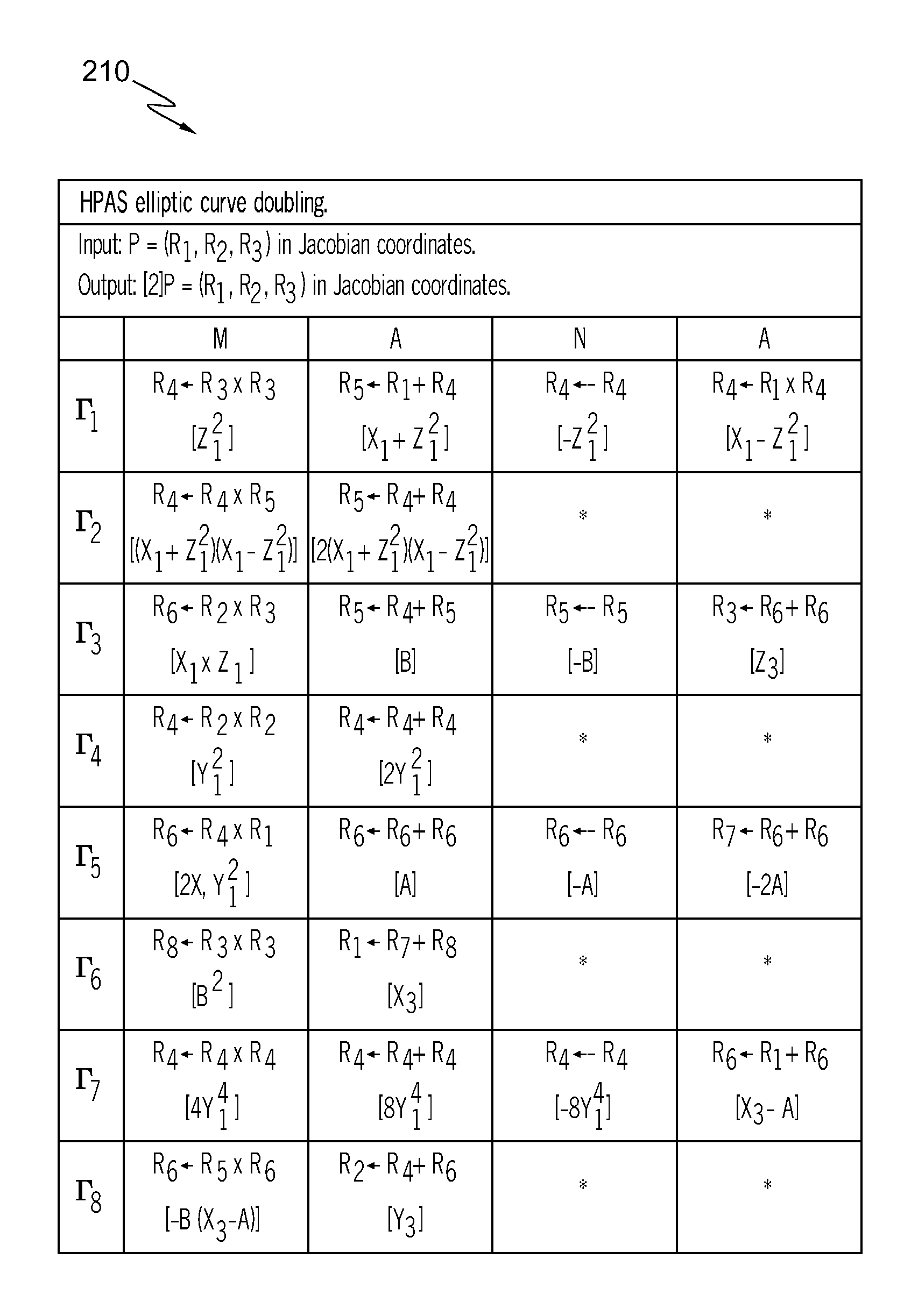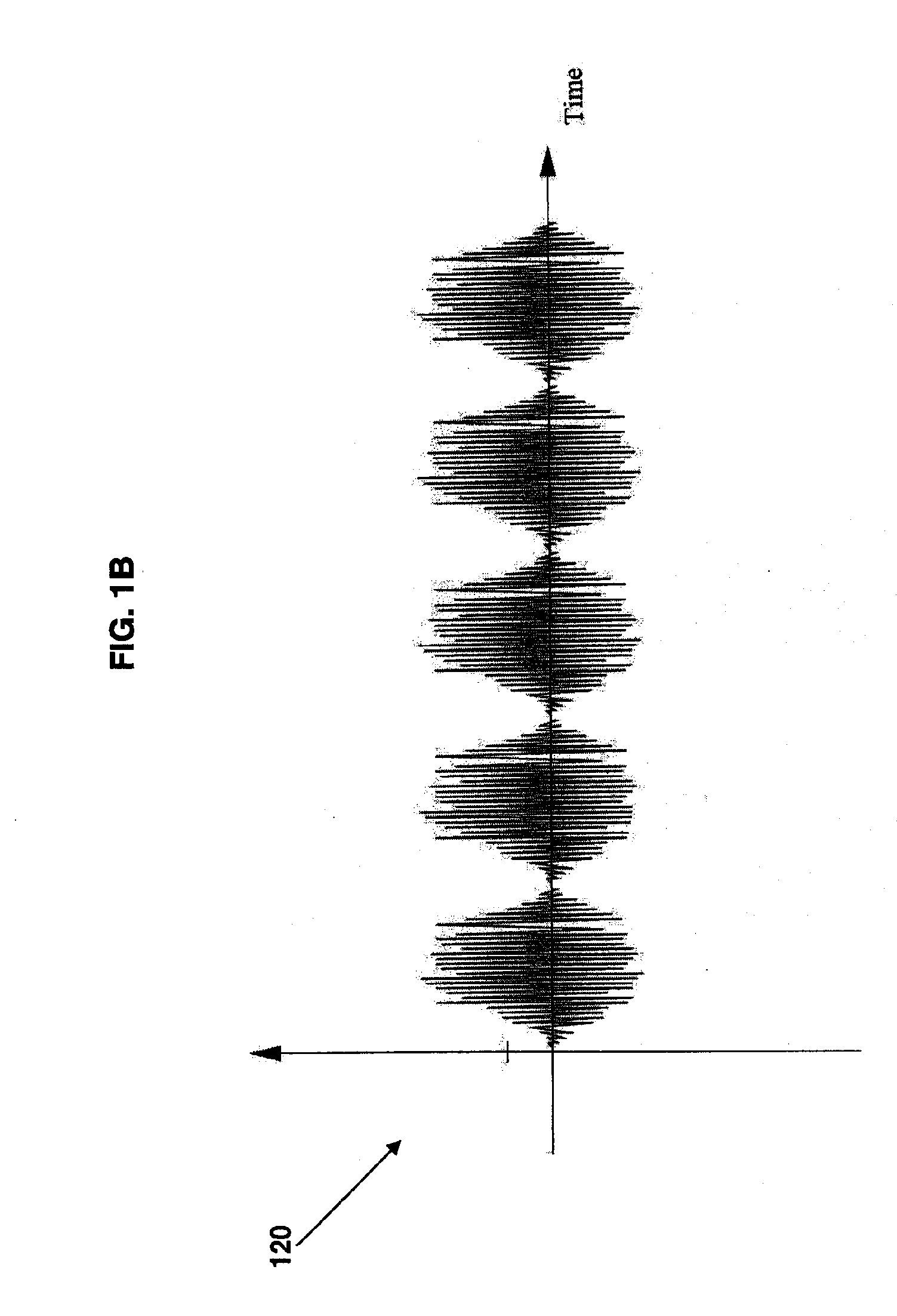Method and system for atomicity for elliptic curve cryptosystems
a cryptosystem and elliptic curve technology, applied in the field of cryptosystem atomicity, can solve the problems of reducing the performance of the system to some extent, reducing the accuracy of the system, and reducing the difficulty of discrete logarithm problems on such elliptic curve groups
- Summary
- Abstract
- Description
- Claims
- Application Information
AI Technical Summary
Benefits of technology
Problems solved by technology
Method used
Image
Examples
example 1
[0031]To illustrate the idea of side channel atomicity, consider the double and add algorithm in the setting of a general multiplicatively written group G:
Algorithm 1: Square and multiply.Input: x ∈ G and k = (kl−1...k0)2Output: xk ∈ G. 1. R ←x; i ← l − 2; 2. while i ≧ 0 do 3. R ← R2; 4. if ki = 1 then 5. R ← R·x; 6. end if 7. i ← i − 1; 8. end while 9. return R
[0032]Algorithm 1 is obviously vulnerable to SPA, as the multiplication in line 5 is executed if, and only if, ki=1. To secure the algorithm, the aim is to identify a common side channel atomic block Γ such that Algorithm 1 can be written as a sequence of repetitions of Γ. The naïve choice for Γ is a block consisting of a squaring and a multiplication. This results in the square and multiply always algorithm shown in Algorithm 2. This algorithm requires 2(I−1) group multiplications.
Algorithm 2: Square and multiply always.Input: g ∈ G and k = (kl−1...k0)2Output: gk ∈ G. 1. R0 ←g; i ← l − 2; 2. while i ≧ 0 do 3. R0 ← R02...
PUM
 Login to View More
Login to View More Abstract
Description
Claims
Application Information
 Login to View More
Login to View More - R&D
- Intellectual Property
- Life Sciences
- Materials
- Tech Scout
- Unparalleled Data Quality
- Higher Quality Content
- 60% Fewer Hallucinations
Browse by: Latest US Patents, China's latest patents, Technical Efficacy Thesaurus, Application Domain, Technology Topic, Popular Technical Reports.
© 2025 PatSnap. All rights reserved.Legal|Privacy policy|Modern Slavery Act Transparency Statement|Sitemap|About US| Contact US: help@patsnap.com



